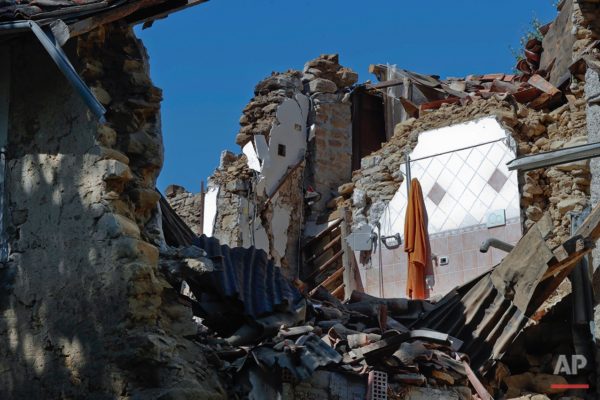Notes
It’s Not Just a Photo, it’s a Story — The Italian Earthquake, and What News Photos Can Do Today
 (click for full size)
(click for full size)
The landscape of news photography is constantly changing. One of the ways that’s happening is that more single-frame news photos are actually telling stories. Just like a good written story creates those little movies in our heads.
Of course, most news photographs exist to illustrate the words. The most typical photos convey setting, atmosphere or story background by showing a a more static view of a person, place or thing. Of course, more vital, relevant or documentary photos capture some act or action, or object or setting to help demonstrate an occurrence as evidence or fact. What we’re starting to see more of, though, are news photographs that can actually tell a story. In the process, they bring a lot of devices into play. Often, the frame will combine something emotional or concerning with something curious or mysterious to elicit empathy, the sense of action over time and a dramatic plot. Take the photo above, for example. The caption reads:
A bathrobe hangs from a wall of a collapsed house in Villa San Lorenzo a Flaviano, near Amatrice, central Italy, Thursday, Aug. 25, 2016 where a 6.1 earthquake struck just after 3:30 a.m., Wednesday. Rescue crews raced against time Thursday looking for survivors from the earthquake that leveled three towns in central Italy and Italy once again anguished over trying to secure its medieval communities built on seismic lands.
A conventional way for news photography to help us imagine events in time is through the use of before-and-after images. It’s popular with editors right now and all the major wire services used the method last week in reporting the Italian earthquake. Some sites, like this one , even lend the photos a more dramatic, movie-like quality through the use of a slider. As effective as that can be, though, it’s still splicing things together. It’s not the same as taking an event and conveying the action in the reader’s own mind and imagination. And that, if you go with it, is what the photo above invites the viewer to do.
Anchoring us in such an intimate, domestic and a thoroughly familiar space, the photo compels us to imagine own own robe hanging on a hook in our own bathroom before stepping into the shower, or getting ready for bed. The “before” (and the establishment of the story) is a space and experience that we can’t not imagine, that we carry in our bones. The stage set with the everyday, the photo then, literally, turns us inside-out. It jolts us from cozy to chaos, from warm to whatever, from encased to exposed, from more central to the periphery, from the intimate to definitely not. Like the villagers, we are blasted into an aftermath as if we, too (standing there naked or with toothbrush in hand), suddenly find ourselves in rubble world.
It’s a before-and-after, but it happens dynamically, through contrasting and evocative elements. And what does our mind do when confronted by confused, but connected story elements? Invariably, we internalize them and seek to connect the dots. Because we’re all inherently story makers and explanation seekers, we can help but account for what happened, and “fill in the picture” in our mind’s eye. Before-and-after photos certainly help us intellectually understand the lay of the land and the type, kind and scale of the loss. They can even fill us with a fleeting feeling of sadness or shock. That’s different, though, than being drawn more experientially into a photo, if we lend ourselves to it, so we’re actually prompted to experience how it all blew apart.
(photo: Alessandra Tarantino/AP)


Reactions
Comments Powered by Disqus